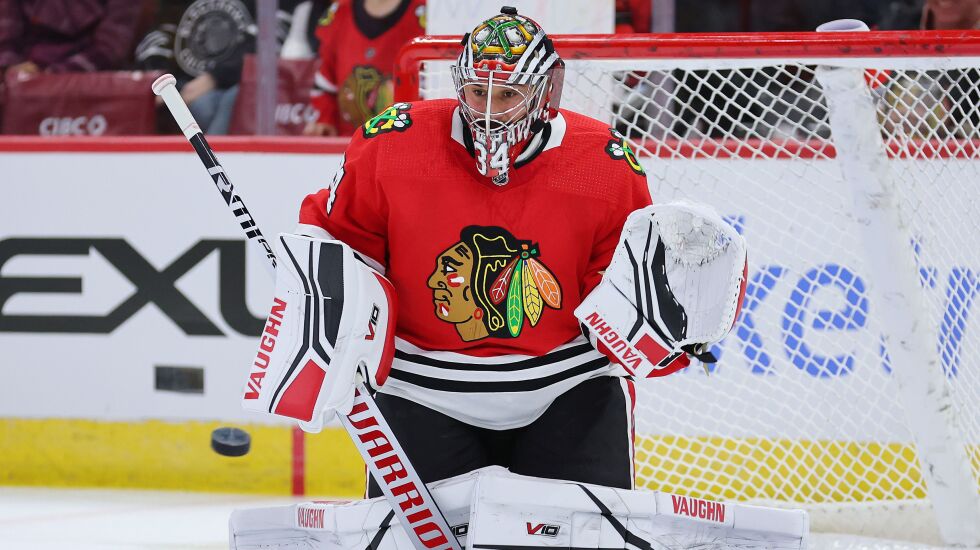
Goalie Petr Mrazek wouldn’t be in Chicago this season if not for his injury woes.
The Maple Leafs only were willing to give up a first-round draft pick to get rid of him — and that first-round pick was the reason the Blackhawks were willing to take him —because of how poorly his 2021-22 season went.
And his poor season predominantly was the result of a groin injury that flared up, on and off, from training camp to the end of the season. The injury limited him to 20 appearances, during which he posted an .888 save percentage.
Now that he is with the Hawks, however, Mrazek is determined not to let injuries derail a third consecutive season. (A lower-body injury caused him to miss all but 12 games for the Hurricanes in 2020-21, too.)
‘‘The No. 1 thing is to stay healthy,’’ Mrazek, 30, said last week. ‘‘I know I can play the game. I know how to play it. I’ve been around for a while. I’m excited for this.’’
Heading into the offseason back home in Czechia, Mrazek decided he ‘‘needed to change some things’’ with his workout routine. He sought out and consulted several new physiotherapists to revamp his training regimen.
‘‘I was getting a little bit more stiff than flexible, like I used to be when I was younger,’’ he said. ‘‘I [started] stretching more than usual, doing different methods. Hopefully it’s going to help.’’
NHL goalies are big proponents of stretching, but Mrazek now stands out among the group. Coincidentally, his new routine aligns relatively closely with Hawks strength and conditioning coach Paul Goodman’s philosophies, which emphasize mobility, elasticity and balance over traditional weightlifting.
Less than two weeks into camp, Mrazek already has noticed improvement in his flexibility, particularly when he is moving laterally. He is ending up in the same positions when making saves, but he is getting to those positions more quickly and easily.
Mrazek is optimistic that means his injury risk has decreased. He isn’t one to worry about injuries while competing, but he would prefer not to have to deal with any for a while.
‘‘You don’t think about injuries at all once you step on the ice or [once] you’re in the gym,’’ he said. ‘‘You just go as hard as you can, doing what you need to prepare. Injuries happen in any sport to a lot of people, so you can’t be focused on that.’’
Hawks coach Luke Richardson said he hopes the team’s new zone-based defensive system also will help Mrazek. It might concede sizable offensive-zone possession time, but if it can keep the puck on the perimeter consistently, Mrazek may not need to make as many sudden, erratic movements that might increase his risk of injury.
‘‘If we can’t strike and get that defensive-zone coverage [to be] aggressive early, [we want to] fall to the middle and give them the outside shots,’’ Richardson said. ‘‘[Our goalies can] trust there’s no back-door, tic-tac-toe plays and seam plays. They can be solid on the short-side shots and gobble those up, and we can be strong in front of him.
‘‘[Mrazek is] a guy who can play acrobatically, but we don’t want him doing that all the time, wasting his energy and getting out of the crease. We want him to be compact and use his quickness. Every once in a while, you’re going to need that big save, and he has the ability to do that. But if you’re asking for that a couple of times every period, that wears him out, then you lose that trust between the people playing in front of you.’’







